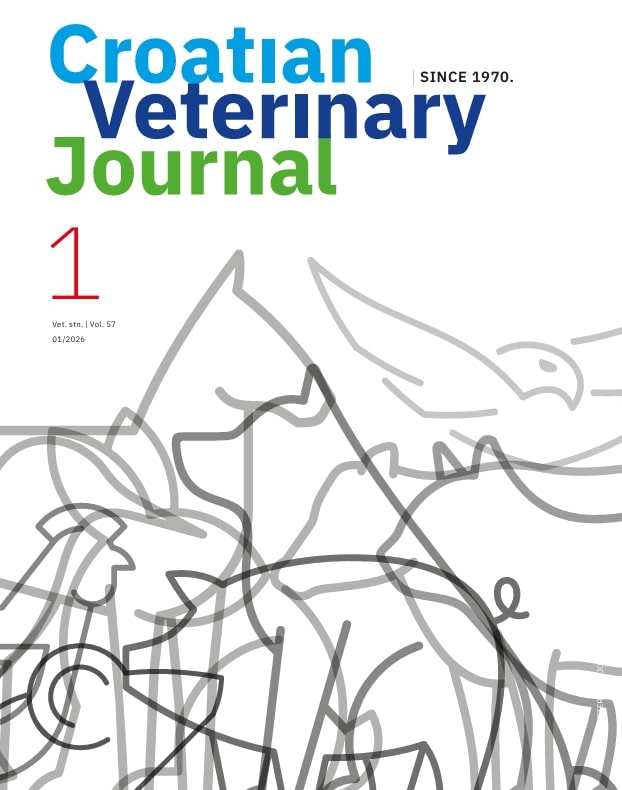Effect of condensed (quebracho) and hydrolysable (sweet chestnut) tannins on growth performance and contact dermatitis in broilers
DOI:
https://doi.org/10.46419/cvj.57.1.10Keywords:
condensed tannins, hydrolysable tannins, growth performance, contact dermatitis, broilersAbstract
The aim of this study was to evaluate the effects of dietary supplementation with condensed (quebracho) and hydrolysable (sweet chestnut) tannins on growth performance and the severity of contact dermatitis in broiler chickens. A total of 150 Ross 308 broilers were divided into three groups: a control group (no tannins), a group receiving hydrolysable tannins, and a group receiving condensed tannins, each at a dose of 0.75 g/kg of feed over a 42-day fattening period under commercial conditions. Body weight gain, feed conversion ratio, litter moisture, and the severity of footpad dermatitis and hock burn dermatitis were recorded. The group supplemented with hydrolysable tannins had a significantly higher final body weight and average daily gain, compared to the control. Both tannin-supplemented groups showed significantly lower litter moisture and a reduced severity of contact dermatitis lesions throughout the study. In conclusion, this study suggests that tannins, particularly hydrolysable tannins, may improve broiler growth and reduce the severity of contact dermatitis, highlighting their potential as functional feed additives. However, further research is required to determine optimal inclusion levels and elucidate their mechanisms of action.
Downloads
Published
Issue
Section
License

This work is licensed under a Creative Commons Attribution 4.0 International License.
You are free to:
Share — copy and redistribute the material in any medium or format for any purpose, even commercially.
Adapt — remix, transform, and build upon the material for any purpose, even commercially.
The licensor cannot revoke these freedoms as long as you follow the license terms.
Under the following terms:
Attribution — You must give appropriate credit , provide a link to the license, and indicate if changes were made . You may do so in any reasonable manner, but not in any way that suggests the licensor endorses you or your use.
No additional restrictions — You may not apply legal terms or technological measures that legally restrict others from doing anything the license permits.

